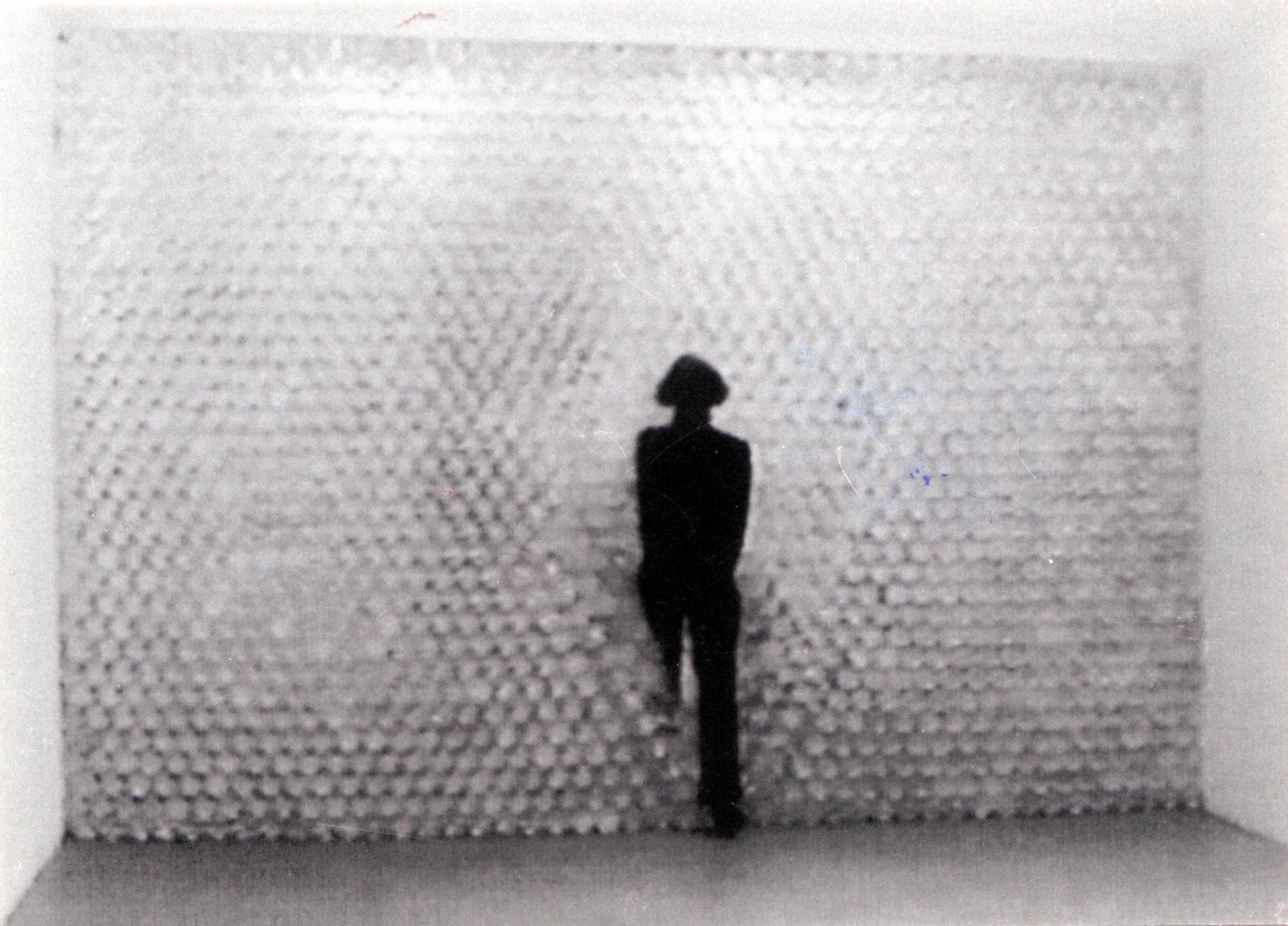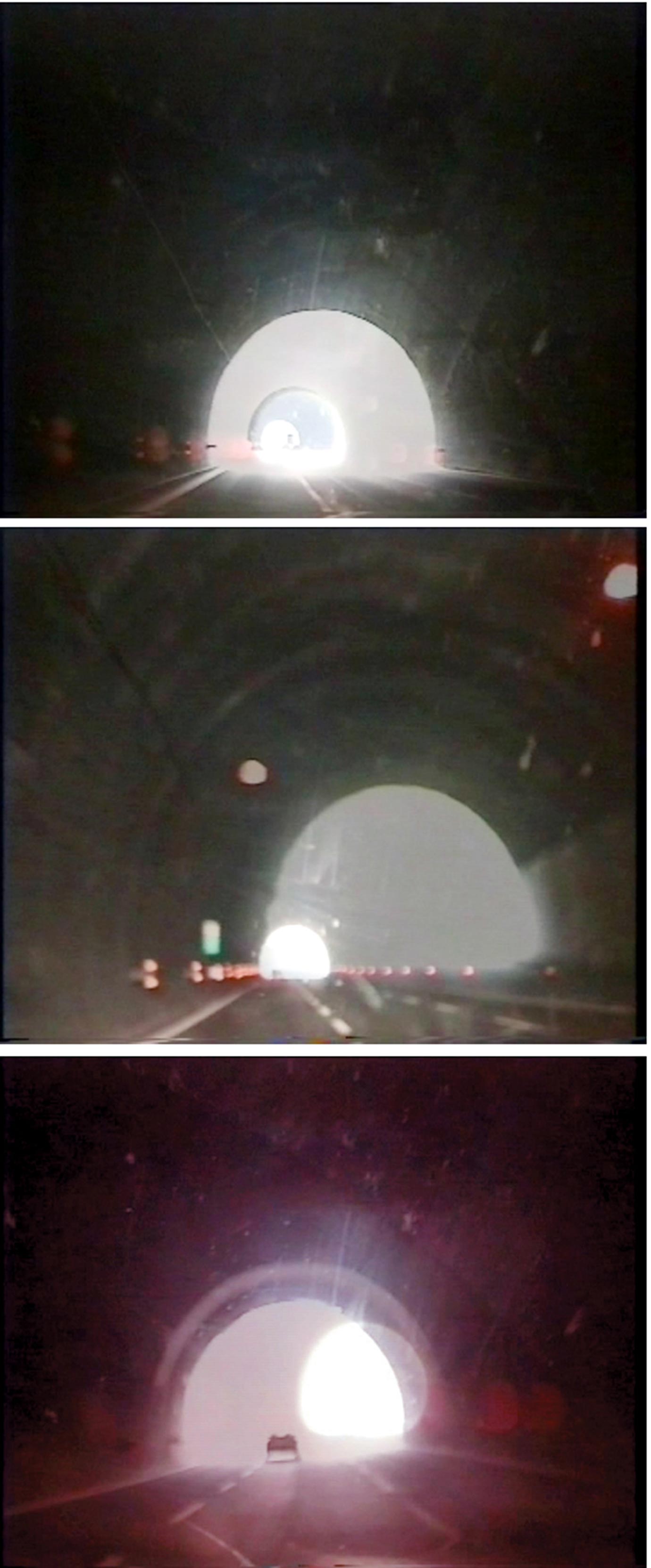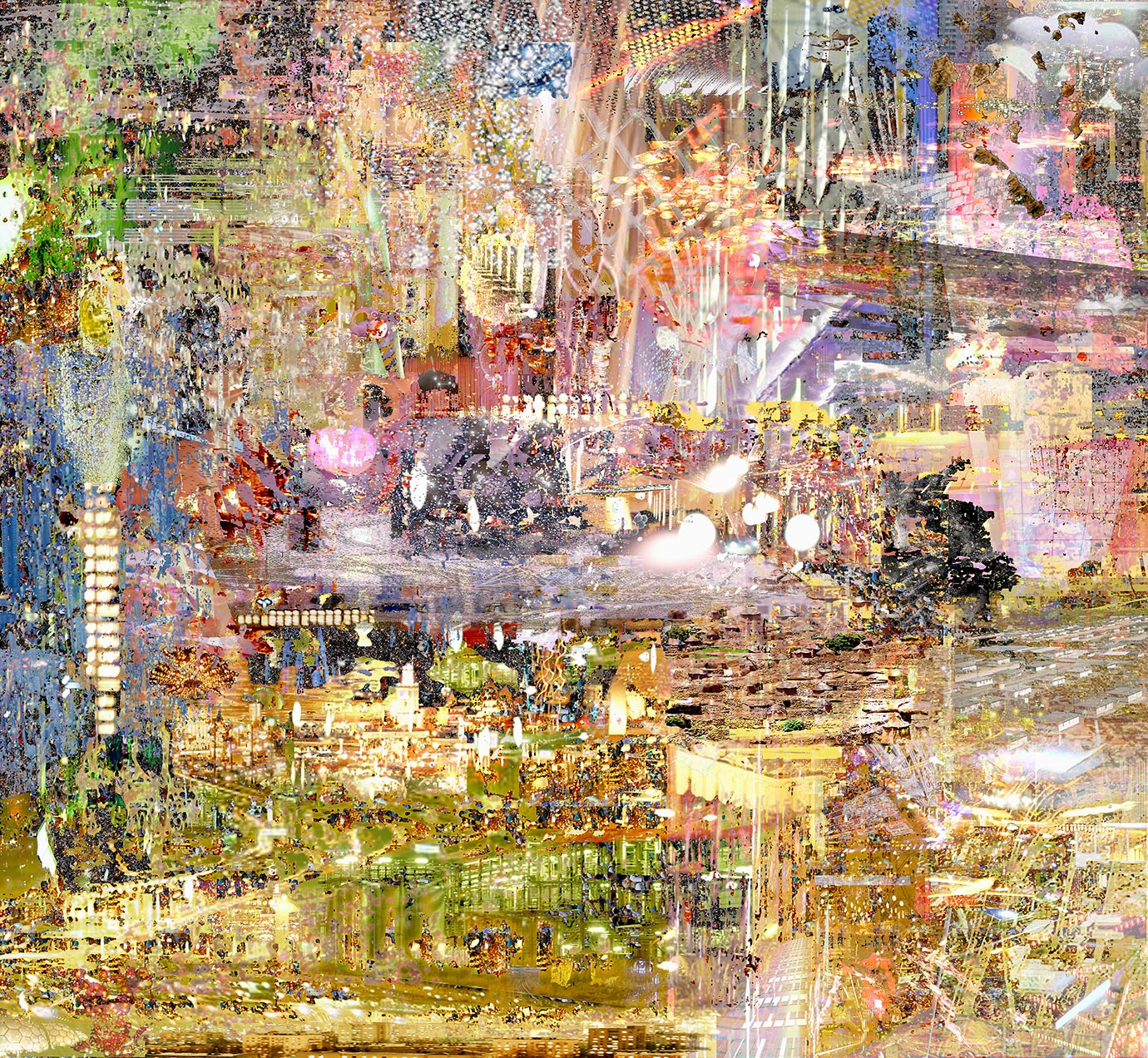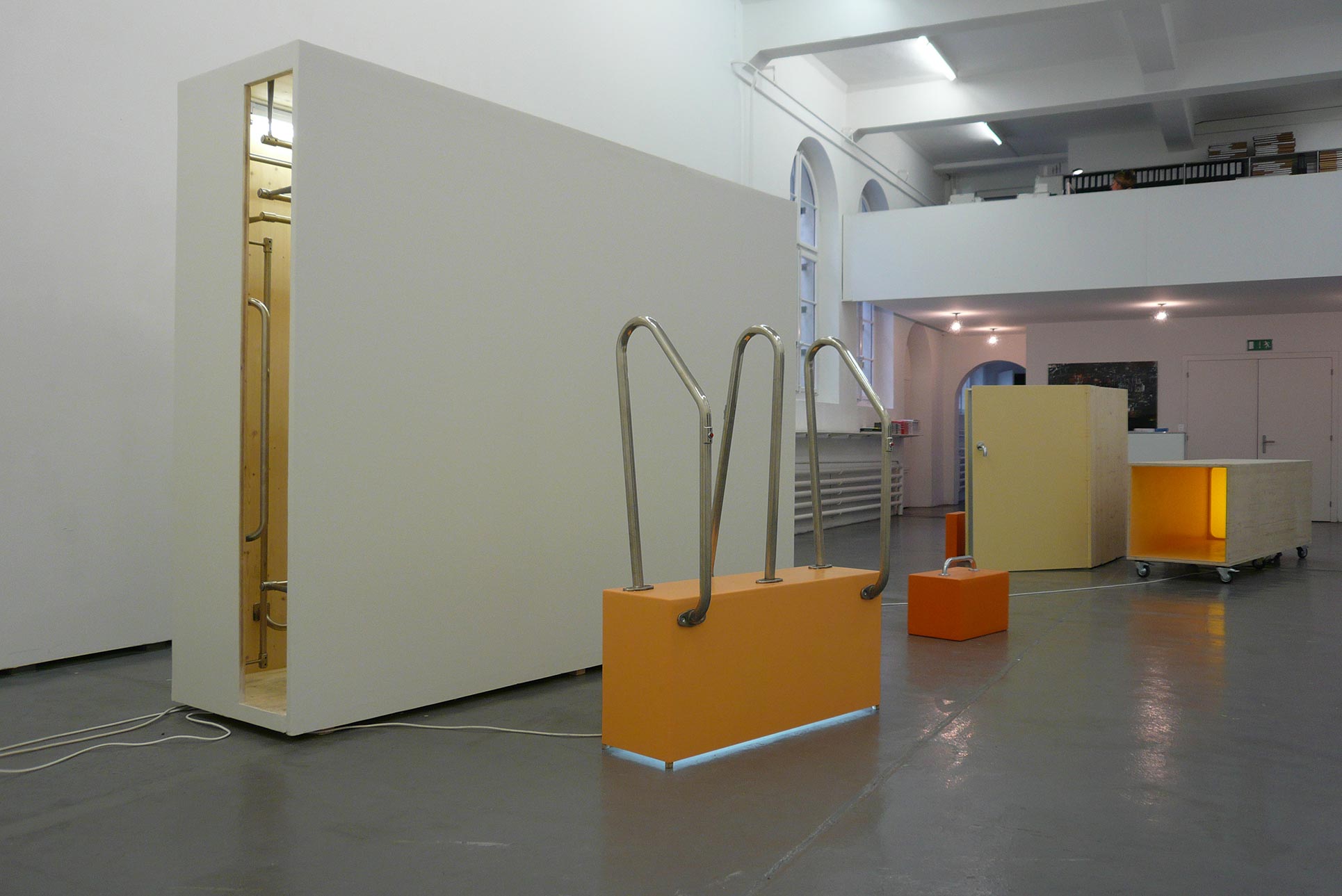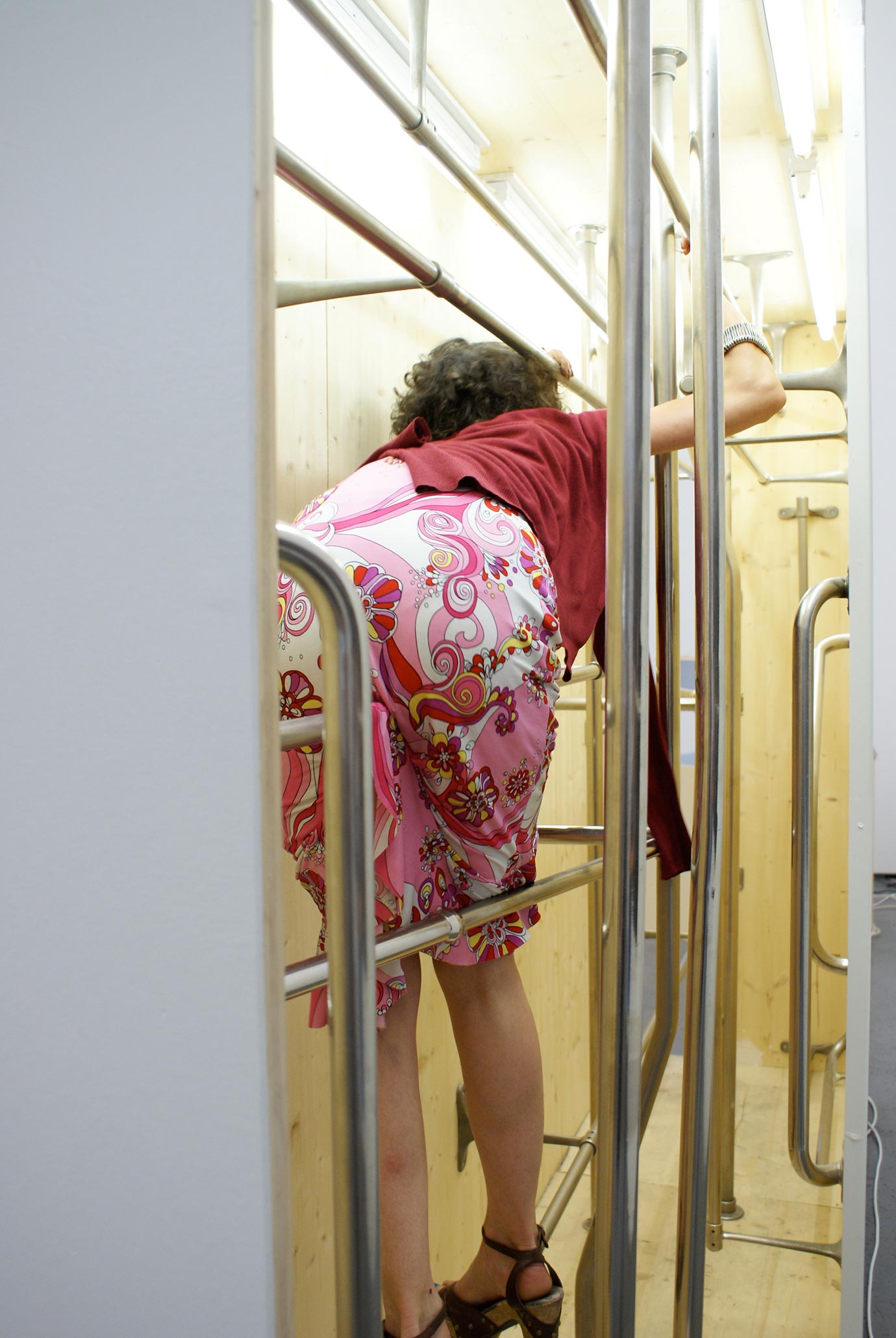Frenzied Standstill in the greatest Movement
“I’d like to invite you to come with me on a Journey” (1), Bessie Nager seems to be saying to us through her works, ambiguous and transcendental, which greet us at the Bob Gysin gallery in Zurich. The installations by the Swiss artist take us far away, to other spaces and times, and never cease to hint at something other than that which they show.
Bessie Nager was born in 1962 in Lucerne, and in 2009 fate took her away from her hectic work activities prematurely: the artist lost her life in a tragic car accident in Switzerland, only a week after her first anthological exhibition Hrönir had opened at the Solothurn Art Museum. Bessie had completed studies in art history at Zurich University concurrently with art at the same city’s University of the Arts: indeed, her works are truly saturated with deep and penetrating reflections, and enriched with countless references to literature and art history. The artist had numerous exhibitions in Switzerland as well as in other countries, and in addition to various educational positions held important posts on a variety of committees, for example, Zurich’s Kunsthaus and the City Council.
Bessie Nager’s works make us go on a journey. Nager has the ability to “see” through things and time – just like the clairvoyant Cassandra – and has the capacity to make the strings of the most common everyday items vibrate; in doing this, she invests these things with a new identity. Just like a fairy, Bessie endows things with a magical tension, those things that have always seemed familiar to us because we make pragmatic use of them daily. The items that are part of our daily activities are exhausted, blind, devoid of colour. When we get on the tram and hold on to the handle, we don’t even notice this metal item which has such an important role in our journeys. The handrail is in its place, it has to be there to fulfil its specific function: it helps us get into the carriage and reassures us, or prevents us from taking a nasty tumble. But in Bessie Nager’s sculptures this simple metal rod becomes a significant element, which, on the one hand, tells us about the balance and stability of things, but on the other, about travelling and roaming around. We are invited to be ceaselessly curious and open to the discovery of new worlds. The artist perceives the meaning of things beyond their outward appearance in the physical world and is able to give a voice, life and beauty to objects, following her own personal preliminary vision. Like Michaelangelo, who was able to “see” a priori the form of his sculpture still trapped within a raw block of marble. Thus sculpting became simply a matter of taking away the surplus parts which were “hiding” the figure already present inside the stone. By working in this way, the Swiss artist deeply explores the meaning of things and goes beyond Kant’s a priori threshold: she reveals to us the deepest meaning of our material world, to the point where it reaches the non-material world. It’s not the “things in themselves” that – in opposition to Kant – are discovered when we encounter them in infinite perspectives, but more than that, we can try to discover them in another, previously hidden, dimension. Bessie Nager’s sculptures reveal to us the other side of the coin, and through this invite us to participate in a long journey to an unknown land, where things begin an unheard of dialogue with us, the viewers.
Movement is a precondition of travel, but what happens if the means of transport are immobile and remain fixed in the same place because they don’t have any wheels? Does the journey then become a mental one? Do we move from the real to the virtual? From being awake, to a dream? From the tangible world to an ideal heaven? In the Les Voyageurs Immobiles series, the artist presents to us an installation made up from items, mainly huge rectangular wooden boxes, painted in warm colours – orange and yellow, which remain immobile on the ground. The placement of the sculpture in the space was inspired by Suprematist representative Kazimir Malevich’s painting Eight Rectangles, one of history’s first and most radical pieces of research in abstract art, which investigated the balance of elements and various dimensions in space. Nager’s sculptures have this abstract aspect – in their simplicity they resemble minimalist sculptures, but at the same time these gigantic boxes are always paired with functional, recognizable items which have been plucked out of context and used like Duchamp did with his ready-mades. In this case, consistent with the title of the work, they are things belonging to the world of travel. For example, the previously mentioned metal tram handles or support rails in various forms, or a bicycle enclosed in a box. With this installation, the artist offers us a spatial system which, on the one hand, resumes the discourse of minimalist art – purely formal reflections – and on the other, makes it into ridicule, confronting it with industrial elements which allude to the concreteness of life and a very precise meaning which now has been taken to absurd lengths. The handles, attached to the wooden boxes, have obviously lost their original mission and been transformed into lines on a spatial drawing, or, if we wish, into mute witnesses of the act of travel itself. The boxes then protect their contents from external danger, but at the same time they imprison it. Therefore, if a bicycle is locked inside the box, it has obviously been robbed of the opportunity to do the task for which it has been constructed, namely – to move freely in space and to transport us around. The title of the series itself, Les Voyageurs Immobiles expresses a paradox: travellers usually move around and if they have to be immobile, by definition they are no longer travellers (unless we are talking about mental journeys).
In the unpublished notes which the artist’s legatees have kindly placed at my disposal, Bessie talks about this work: “The real and obvious experience of various spatial relationships as an invitation to perceive reality as virtual. (..) The subject of the work is the location of the art, the place where the construction of reality is carried out. The spatial system is found on the boundary between digital and analogue, cold and hot. Respectively, the image’s location. The light screen or monitor, the self-lit screens which lack depth but which simulate, instead, depth and information and create detachment from the viewer which is an inseparable component. Every spatial system is distorted in itself, and devoid of roots.”
At the breaking point we find again the theme of duality and paradox which runs through nearly all of the Swiss artist’s works: in 2006 the video Roadmovie came out, in which scenes are doubled, that is the opposite sides of the scene’s horizontal axis are mirrored. In this way we enter the universe between a dream and a kaleidoscope of images “smashed” all along the horizon line, distantly reminiscent of a Rorschach test. Psychologists once used these random ink-blots, which were duplicated by folding the page in half, to “analyze” an individual’s presumed psychological traits. But it seems as if Bessie isn’t interested in conducting introspective and abstract research, rather she’s more oriented towards the external space and is seeking to reinforce the mystery of the landscapes by duplicating them. In this way, a split world between earth and heaven is born: “between above and below, a dwelling in the clouds”. Bessie’s positions are always in suspension, the spaces leaving open a powerful ambiguity, a “no-man’s land” or better a terrain vague: between above and below, between heaven and earth, between the somewhere else and the here and now, there exists some third place. An undefined space or, as just mentioned, “a dwelling in the clouds”.
In the gigantic Hrönir sculpture, the title of which is derived from a term used by Jorge Luis Borges, which could be translated as ‘substitute’ or ‘model’, Bessie Nager has reconstructed a Zurich tram – a life sized wooden model – and placed it in a museum: this time, too, the tram is without wheels, and has therefore been deprived of any form of movement. The reproduced tram is and remains a crude creation, supplanted into the exhibition space as if it were an alien. This fake tram is like a Ghost Train, and it has a peculiar feature: its inside is located on the outside and its outside – in the interior. The interior of the space – where all of the handrails are in place – is illuminated by the brightest white neon light, and the windows are covered with some milky opaque material, making it difficult to see through them. The exterior of the tram is painted a dark grey, and its windows have become frameworks for photo montages, teeming with scenes from public spaces which have been taken from the internet.
The artist comments on this as follows: “Transport is an urban obsession, continual transit, controlled movement, (..) a sculpture in public space, which becomes visible because it’s been transferred to the interior (..) It is a common destiny, to be travelling together, inside out, the light and dark.” So we find new juxtapositions in Nager’s tram, but this time the elements have been interchanged: the light and dark, the inside and outside. From inside the tram I don’t see anything out of the windows, as they are completely blind, whereas from the outside I see the things that I should see from the inside: the external world, even if it’s transformed into a dreamlike atmosphere, lacking in orientation, proportion and three dimensionality.
Images have been mounted in the place of windows, openings and walkways from the inside to the outside and vice versa, in this case however these walkways have been made blocked up and therefore (this time too) they’ve been robbed of their function. The Hrönir tram windows are mute and blind, the public space seems to be located on the inside, where in actual fact there is nothing, except for a freezing, blinding light. Bessie’s photo montages are not so much city scenes as multicoloured layers with many perspectives, made up of images taken by the artist herself as well as ones she has found on the internet, layered one on top of the other in all directions. As if the internet were a big saucepan and the artist had tipped out all these images it contained onto a surface. In this way, a world without any definite orientation is created, a world which lacks the illusion of space, a flat world – pre-Galileo or perhaps a post-Euclidic? The incessant flow of images in virtual space has been trapped in real space and replaced it: reality made up out of non-material images. Reality is always created through images and perceptions, our own and those of others, both preconceived as well as empirical. Many worlds exist, because there are many different views of the world.
I’d like to let the artist speak again: “Allover. No top no bottom, many horizons, stratification, rhizomatic structures. Density of communication, pile-ups, collisions. Many exits, no hierarchy…Like in a film, the observer becomes a traveller.” Bessie Nager’s spaces – no matter whether they’re two dimensional or three dimensional – invite us to travel, dream, fantasize about existing worlds and the worlds which have been born in our imagination – which often aren’t that different from each other. Our reality is complex and is made up of many layers, and often it’s hard to determine which way is up and which way is down. But precisely because of the density of the material we always have to be vigilant and alert to traps: the risk of pile-ups or collisions cannot be dissociated from a world imprisoned in a dialectic between order and chaos, between being immovable and a journey, as “behind every image there’s another image, a series, many different viewpoints, images which are zoomed in and placed next to each other, on top and within. A small world.”
In this life it’s hard to orient yourself, and that’s why it’s important to learn to see properly: in a phenomenological sense, we could regard that our task is to always doubt the things we think we know, and to try, each moment, to examine everything that is before us more closely. Accordingly, the task of art for Bessie Nager is: “to transmit the feeling of an item as a “seeing”, and not just as a “recognition””. Every new look will allow us to rediscover some additional aspect of the world anew, to forget this reality which we’d prematurely classified as “known”. But, as I said at the start, Bessie doesn’t even stop at “seeing” in its phenomenological sense. Her vision is like an X-ray and can cleverly pierce through the surface of things to reveal their completely unexpected meanings.
The Swiss artist doesn’t restrict herself to offering us juxtapositions as paradoxical items, bereft of their functions, that have inherited a different meaning reaching beyond material appearance. Bessie Nager brings us closer to spaces which open up between two opposite extremes of duality: the spaces “in between“, the intermezzos, where shifts from from one state to another can emerge or where you switch from one situation to another. As we have seen, doors and windows play a primary role in the works: they appear as the border between the outside and the inside, between the public and private space. The artist has worked with passages in two spatial works and in one video series. In the installation TRANSIT (2009), she piled up a huge wall from coloured plastic bags – the type often used by immigrants – until they completely closed off the room. The bag, as a sign of mobility but simultaneously representing someone who has lost everything except the bag itself, thus became a symbol for closure and rejection. The wall, obviously, raises associations of the one built on the Mexican border to hinder emigration to the United States, and in the same way the Berlin Wall, more so than the wall which divides Palestine. Passages and walkways open or close, passages and walkways allow us to get from one space to another, to get from one state to another.
As opposed to migrants who are forever fleeing, the children in the Contreparade (2006) video run happily in a circle from one door to the other in a completely white space, and having disappeared through one, after a moment appear again through the other. In this way a continuous running circle is created – exiting and entering in endless motion. This time the transitions represent life and lightness: where everything flows and runs smoothly; obstacles, refusals or blockages are not foreseen in this world where innocence and freedom prevail.
Bessie abandoned us – a “frendzied standstill in the greatest movement” – in an unexpected and violent collision, as she was travelling in her car towards new goals in a very full life, when she still had so much more to tell us. But the artist continues to make herself present; her messages, though they seem to belong to the past, can in truth be heard in the future: Bessie sees through things and speaks throughout time like Cassandra, the seer. The most moving of all her works is a performance of D’un ciel à l’autre (‘From one sky to another’. 1994) with the power of its prophetic message, in which it seems that what’s yet to happen has already been prepared. After building a wall of plastic bottles, precisely and carefully placing them one on top of the other, and completely closing off the Lucerne o.T. Gallery space, Bessie crossed it at a decisive pace and in doing so made her construction collapse, simultaneously passing to a different heaven…
“Another place is an inverted mirror.”
Jorge Luis Borges, who is cited by Bessie Nager in her notes.
Barbara Fässler
/Translator into English Uldis Brūns/
(1) Here and onward the citations are taken from Bessie Nager’s unpublished notes: Nager, Bessie. Rasender Stillstand bei höchster Mobilität. Unpublished notes.
